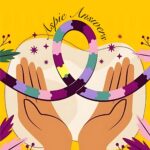Learning Disabilities / Differences Glossary (A–Z)
Clear, respectful definitions with everyday examples — to support learners, families, and schools.
Welcome
Learn at your own pace
This glossary explains common terms for learning disabilities/differences in friendly language. Every learner is unique; these definitions are a guide, not labels.
Note: This page is educational and not a diagnostic tool or medical advice.
Search the glossary
A
Letter A
- Accommodations
- Supports that remove barriers while keeping the same learning goals (e.g., audiobooks, extra time, quiet room). Example: “I use a quiet space for tests so I can focus.”
- APD (Auditory Processing Differences/Disorder)
- Differences in how the brain processes sound, which can affect listening in noise or following rapid speech. Example: “Written notes help when speech is fast or rooms are noisy.”
C
Letter C
- Co-teaching
- Two educators share planning and delivery to support diverse learners in the same classroom. Example: “One teacher leads, the other supports small-group practice.”
D
Letter D
- DCD / Dyspraxia
- Differences in motor planning/coordination that can affect handwriting, organisation, or movement. Example: “I use typed assignments and break tasks into steps.”
- DLD (Developmental Language Disorder)
- Language differences that can affect understanding or expressing ideas. Example: “Visual timetables and simple sentences make school easier.”
- Dyscalculia
- Differences in number sense and math processing (e.g., place value, arithmetic facts). Example: “Base-ten blocks and visuals help me ‘see’ the maths.”
- Dysgraphia
- Differences with handwriting/written expression (spacing, letter formation, idea-to-paper). Example: “Speech-to-text lets me get ideas out without fatigue.”
- Dyslexia
- Reading/spelling processing differences (decoding, phonological awareness) with many strengths in creativity and reasoning. Example: “Audiobooks help me enjoy novels without strain.”
E
Letter E
- Executive Function
- Starting tasks, planning, remembering steps, shifting focus. Example: “Checklists and body-doubling help me begin and finish work.”
G
Letter G
- Graphic Organisers
- Visual tools that structure ideas (e.g., story maps, Venn diagrams). Example: “I use a sequence map before I write.”
I
Letter I
- Individual Support Plan (IEP/504 equivalents)
- A plan that documents strengths, needs, and agreed supports. Names vary by country (IEP/504 in the US, other terms elsewhere). Example: “My plan lists extra time and a reader for exams.”
L
Letter L
- Literacy Interventions
- Structured, systematic programs for reading/spelling with explicit phonics and language instruction. Example: “Short, daily lessons help me build decoding skills.”
M
Letter M
- Modifications
- Changing the learning goals (e.g., different reading level or shortened outcomes) so the task matches the learner’s current stage. Example: “I use a simplified text while building skills.”
- Multisensory Instruction
- Using sight, sound, movement, and touch together to learn (e.g., say it, hear it, write it, build it). Example: “We air-write and use tiles to practise spelling.”
P
Letter P
- Phonological Awareness
- Understanding the sound parts of language (rhymes, syllables, phonemes) — a core foundation for reading/spelling. Example: “We clap syllables and segment sounds before writing.”
- Processing Speed
- How quickly someone can take in, work with, and respond to information. Example: “Extra time helps me show what I know without rush.”
R
Letter R
- RTI / MTSS
- Tiered support models (Response to Intervention / Multi-Tiered Systems of Support) that add help as needed. Example: “I get small-group reading four times a week (Tier 2).”
S
Letter S
- Scaffolding
- Temporary supports (models, prompts, exemplars) removed as independence grows. Example: “I use a sentence starter, then try a paragraph on my own.”
U
Letter U
- UDL (Universal Design for Learning)
- Planning multiple ways to engage, represent, and express learning so more people can succeed. Example: “I can show learning through a poster, a video, or a talk.”
Thank you for learning with care
If this page helped, you might also like the other glossaries in this series.
← Back to Understanding Terms Hub Previous: Neurodiversity Glossary Next: Mental Health Glossary →
© 2025 Aspie Answers | “Learning grows when support is accessible.”